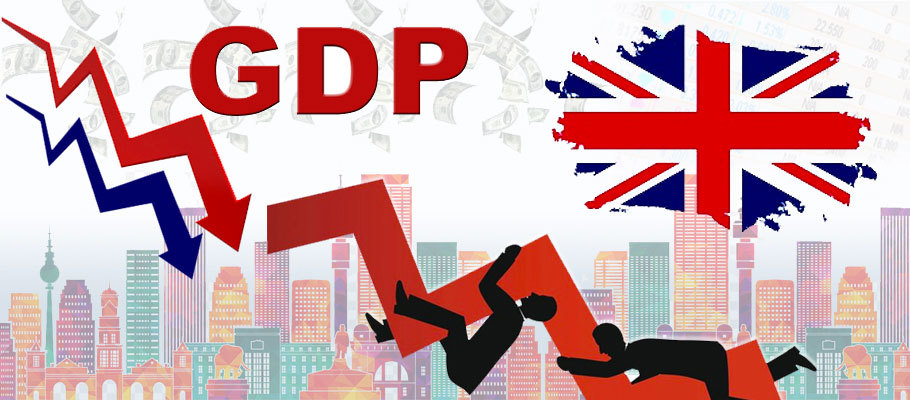
Published: July 17th, 2020
Despite a healthy rally through the first half of July, Sterling faced new hurdles this week with the publication of the UK’s monthly GDP numbers.
Official figures from the Office for National Statistics (ONS) showed the UK economy was still growing – up by 1.7 per cent in May – but falling well short of economists expectations. Pundits sought a healthier 5.5 per cent expansion, given that government lockdown measures in some parts of the British economy had begun to ease.
The underwhelming data strongly suggests that Blighty’s economy isn’t bouncing back as robustly or rapidly as analysts had hoped, after COVID-19 restrictions on movement, travel, and commercial activity slowed the economy to a crawl in April and output dropped by more than 20 per cent.
After shocking job roll figures in June, analysts are also warning of coming employment crisis that will heap more pressure on government budgets and add to the country’s economic woes.
Commenting on the figures in a note to investors, analysts at Close Brothers Asset Management in London said that only hitting 1.7 per cent growth in the same month when lockdown measures began to ease, suggests stormy weather ahead.
‘The marginal improvement in GDP is welcome but has to be seen in context. The British economy is still 25 per cent smaller than it was before the pandemic took hold in February and March. Industrial and High Street jobs are evaporating at an alarming rate. The ONS GDP figures don’t offer any signs that better prospects await the UK labour market anytime soon.’
OECD forecasts already place the UK amongst those countries hit hardest by the coronavirus crisis. Forecasters say any evidence confirming that view will weigh heavily on sterling in the coming weeks.
Confidence in Britain's economy took a significant hit in June when it was reported that British payrolls had plunged by more than 600,000 people in April and May as coronavirus restrictions on business hammered the UK’s labour market. In the same period, the Office of National Statistics (ONS) revealed that the number of job vacancies had also cratered, posting the worst two-month drop ever recorded.
While June’s ‘official ‘ UK jobless rate was much lower at 3.9 per cent, The government’s nationwide ‘furlough’ job retention scheme was masking the true extent of devastation in the job market. The wording in the way jobless statistics are classified meant unemployed numbers were undercounted, as people on furlough were barred from looking for work.
Economists at Oxford University said they expected unemployment to worsen in the coming months. Other experts worry about the potential for a second wave of infection in the Autumn when colder weather returns, and the potential for another jump in jobless numbers when the furlough scheme comes to an end at the beginning of November.
It would take a bold package of support measures from the government, they said, to turn things around and fend off a second wave of mass unemployment – something not yet seen in the careful but limited measures undertaken so far by Westminster in response to the pandemic.
Forex analysts say the steady drumbeat of negative monthly figures from the ONS is adding to gloomy market expectations for the pound.
With large employers in travel and manufacturing announcing significant redundancies, and confusion about official advice around use of facemasks in shops, pubs, and restaurants, COVID-19’s impact on British economic activity looks set to continue despite the so-called ending of lockdown measures.
June’s employment figures also showed the number of people claiming ‘Universal Credit’ social assistance also exceeded expectations, with a worrying leap to 2.7 million claimants in May – a rise of more than half a million people and twice the figure recorded the month before.
Prime Minister Boris Johnson’s conservative government has tried to reduce the risk of a second coronavirus wave this summer while also trying to return the economy to normal. A new one-metre social distancing rule has been adopted to encourage shoppers and pub-goers to make a careful return to their pre-COVID buying habits.
The government’s pandemic job-protection scheme, where furloughed (temporarily laid-off) workers receive 80 per cent of their regular paycheque, covers over 9 million jobs. The number of hours worked also dropped dramatically last month while hourly pay rates stumbled to the lowest rise in five years.
Brexit trade negotiations and a sense of ongoing deadlock between the EU and Britain is also having an impact on the pound.
With no extension to the Brexit transition period, the two sides need to hammer out a deal by 31st December – less than six months to stop the UK from crashing out of the bloc without any continuation of current trade arrangements with the country’s number one export market.
PM Johnson wants to see Brexit talks ‘over and done with’ by November – the same month that unemployment numbers could potentially skyrocket. Currency strategists in London have said that markets need positive news from the Brexit talks soon, in order to keep EUR/GBP balanced in Britain’s favour.
Sterling had already seen one big selloff this year when markets expressed nerves in May about the upcoming June summit meeting between the EU And UK sides designed to take the Brexit talks forward.
Leaders in Westminster and Brussels are now focused on getting their economies into recovery mode and hopefully putting the coronavirus crisis behind them. Whether that's possible with new cases spiking in major economies like the US and Brazil – and daily new cases of infection in the UK still in the hundreds – remains to be seen.